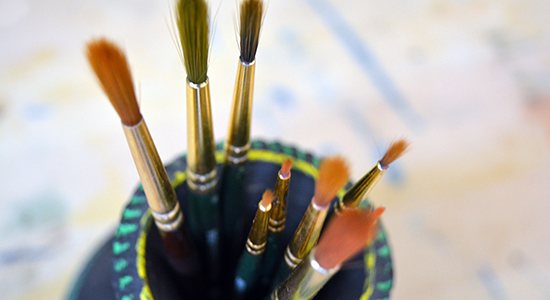Have you ever wondered if a person or company was acting as your art dealer, or was the relationship something else? An art dealer is any individual, group of individuals or company that buys, sells or trades in art. The dealer may or may not have exhibition space open to the public. The dealer can operate within varying commercial structures -from an individual in their home to a corporation with gallery space. There are neither government regulatory requirements nor a licensing body for art dealers. Many are members of professional organizations that provide education and networking opportunities.
Sheryl G. Wood, Esquire, discusses the artist dealer relationship in this article. Sheryl specializes in representing collectors, artists, dealers and those with an interest in the business of art. Sheryl has been generous with her time and expertise by contributing to this blog. She can be reached at artlaw@earthlink.net.
Please note: This is not intended as legal advice. Any advice will always depend on the specific facts and circumstances of the situation.
Most artists like to sell their work and to be treated fairly in the process. A good art dealer can be a significant asset to an artist. But, it is important for both the dealer and the artist to think about the relationship before entering into any type of agreement. A written agreement is very important to both! It is the framework for the artist-dealer or principal-agent relationship. A written agreement should include the following:
- how the artist gets paid
- the degree of artistic control the artist has in staging an exhibition of the works
- the amount of commission payable to the dealer and how it is computed.
- any other terms specific to a particular artist or dealer
- counsel to review the agreement
- a sales or consignment agreement for each piece of art to be transferred. The consignment agreement can be part of the original agreement or an attachment. Both the agreement and consignment form(s) must be signed by both parties. In addition, each time you consign work(s), a consignment form should be drafted and signed.
So how does a sale occur?
It could be an outright sale from the artist to the dealer. While this is rarer than consignment arrangements, a written document should still be drafted and signed to protect both parties, even if payment has already been made:
- proof to the creation and ownership of the works,
- confirmation of any agreements on reproduction rights or
- any other portion of the copyright that is to be retained, licensed or sold.
- mention of the right to collect royalties or the right to borrow back for exhibitions.
A consignment arrangement is usually how most art works are sold. And again, there should be a written agreement signed by both parties. In Florida, where I live, if the sale is for more than $500, without a writing evidencing the sale, the agreement is generally unenforceable. Under Florida law, consignments are presumed when an artist delivers a work of art for sale or exhibition and the art dealer accepts that delivery. In a consignment agreement, the dealer becomes the artist’s agent and owes a fiduciary duty to the artist. This means the dealer must act in the best interest of the artist. The dealer must care for and manage the works prudently; deal fairly and honestly with the artist; periodically account as to the dispositions of the works; and disclose all information relevant to the works and the artist.
An artist must also make a determination as to whether or not to grant exclusivity to the dealer. There are generally two types of exclusivity arrangements:
1) An exclusive agency arrangement where the dealer is the only dealer, but the artist can also sell their own works without paying the dealer a commission.
2) An exclusive power to sell is more advantageous to the dealer. In this arrangement the artist cannot sell on their own without paying their dealer a commission for the work sold.
Enforcement can only be realized in most cases with a signed agreement. The artist-dealer relationship can no longer be built on a conversation and a handshake; many artists and dealers are now entering into written agreements. This is not an insult, but a part of the economic times and legal realities of today’s art market. It is important that the agreements be as specific and as clear to each party’s intentions. If not, even with a written agreement, you could leave yourself open to court or other administrative determination.
Here are examples of two opposing court rulings:
- Georgia O’Keeffe’s dealer of many years never requested a written contract. Even though the dealer had been promised many things by the artist, when there was a falling out and no written contract could be produced, the court found the alleged oral promises to be unenforceable.
- In contrast, the artist Peter Halley entered into an oral agreement with his gallery. When the relationship soured the artist alleged that written contracts had been discouraged by the gallery and therefore there was no contract to be breached when he found alternative representation. The gallery alleged it had built the artist’s career and reputation and had incurred costs of over half a million dollars in doing so. After some preliminary rulings by the court, the parties settled with the artist paying undisclosed sums to the gallery.
So what are the lessons to be learned? There should always be a written agreement/ contract that is clear and complete, otherwise it can require interpretation by the courts. The agreement should be drafted by professionals looking at your specific circumstances. You can start with a template, but should be customized for both buyer and seller. The need for written agreements should not discourage artists; if done properly, these agreements can be a tremendous help in the long run by ensuring those tough conversations are had before the parties enter into a relationship. It is never a good time to review those terms after something has occurred to the artist’s detriment. This creates a more professional relationship between the artist and dealer that will hopefully last a long time and be mutually beneficial.
Pin It


Recent Comments